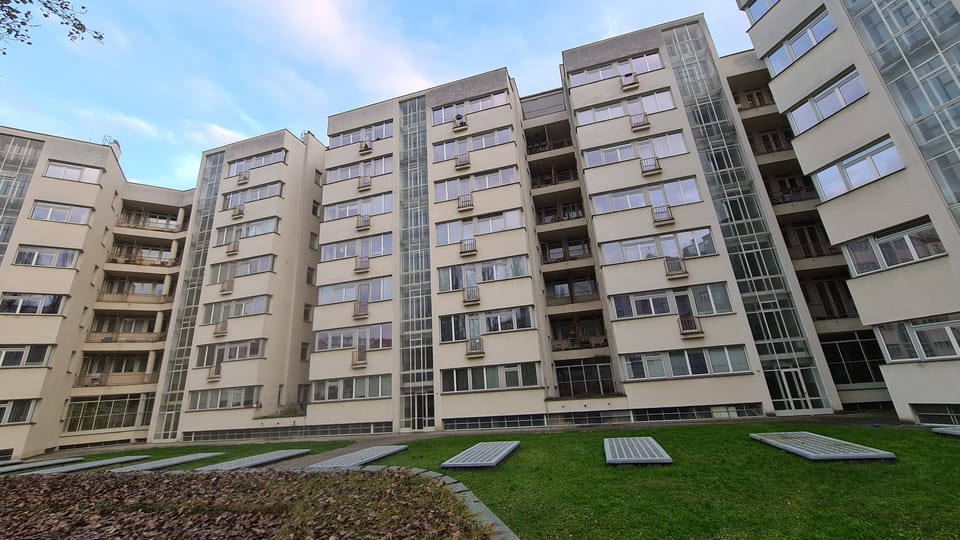
Photo: Klára Stejskalová, Radio Prague International
Built at the end of the 1930s, the Skleněný palác or Glass Palace is a late functionalist-style apartment building constructed for Prague’s middle class. With its groundbreaking design and plush amenities, the palace was extraordinary not just for Prague but also for the whole of Europe.
The Glass Palace or “Skleňák”, as it is colloquially known in Czech, has stood on Náměstí svobody in Prague’s Bubeneč district for more than 85 years. With its off-white tiled exterior, the building can be easy to overlook. Nonetheless, it is a cultural monument, designed by architect Richard Podzemný. Architecture historian Miroslav Pavel points out the unique aspects of the Glass Palace.
“For me personally, the Glass Palace stands out because it does not really fit in with its surroundings. The plan for the whole area around Dejvické náměstí was created in 1926, and it was based on a style that reflected the nationally conscious mood of the time, that is the neoclassical national style. However, the “Skleňák” already belongs to the later Czech functionalism, which was one of a kind. Podzemný gave us a type of architecture that perfectly matched the five points of architecture developed by Le Corbusier. The Glass Palace stands on the corner and opens out to the surroundings. It communicates with the big square next to it and naturally stands out.”
See the rest here.
Authors: Vojtěch Pohanka, Klára Stejskalová

